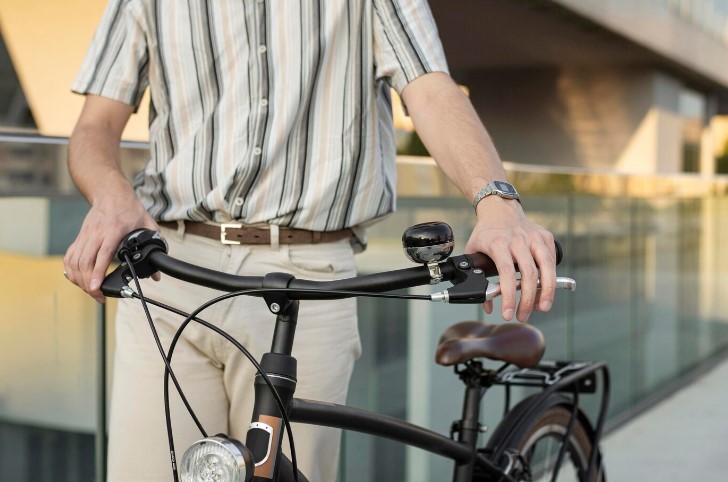How to assemble your bike?

Ordering a bicycle online has several perks, like a wider range of options and better deals, but it comes with a big task – you have to put the bike together yourself. Don’t worry, though – anyone can do it if they follow a good bike assembly guide. The trick is to be organized about it.
Preparing for assembly: Essential tools and setup tips
Most bicycle assembly instructions usually recommend a few basic tools.
Collect everything you’ll need such as Allen wrenches, a torque wrench, a tool for the pedals, and some bike lube. These are the basics for a smooth build. It’s also key to make sure all the parts are in the box before you start. Use a checklist to check everything off so you don’t get any nasty surprises halfway through.
Once you’ve got all your stuff out, find a flat steady place to work. This helps you keep track of small bits and pieces and keeps your bike stable while you’re working on it. Remember, some bikes might need special oils or greases if they have parts made of carbon.
Step-by-step bike assembly process
Assembling a new bicycle is a structured task that needs a careful approach. To make sure you don’t miss anything, use this guide:
- Unpack and inspect Start by opening the box with care. Watch out for sharp staples that might hurt you or scratch your bike. Take out the bike and all its parts looking for any damage from shipping. Keep the box and packing stuff – you might need them if you have to send the bike back or move it later.
- Install the seat post The seat post goes in first. If your seat post is carbon, use carbon assembly paste inside the seat tube. If it’s metal, use grease instead. Slide the seat post into the frame, set it to about the right height, and tighten the seat post clamp. You can adjust the saddle height after you finish building the whole bike.
- Attach the handlebars Now it’s time to put on the handlebars. If your bike has an all-in-one cockpit just line up the handlebars with the fork and tighten the stem bolts to the right level. For bikes with separate handlebars and stem, put the handlebars in the right spot in the stem and tighten them.
- Insert the front wheel With the handlebars attached, your bike will start to take shape. Insert the front wheel by aligning it with the fork and securing it using either a thru-axle or quick-release skewer, depending on the design. Ensure the wheel is correctly centred to prevent brake rub or misalignment.
- Inflate the tyresBefore moving forward, inflate the tyres to the recommended pressure indicated on the sidewall.
- Install the pedals Pedals are often side-specific, with the right pedal tightening clockwise and the left pedal tightening counterclockwise. Apply a small amount of grease to the pedal threads before installation to prevent seizing. Use a pedal wrench or Allen key to secure the pedals firmly.
- Adjust the saddle height Revisit the saddle height. Adjust the height so that when sitting on the saddle with your heels on the pedals, your leg is fully extended at the lowest point of the pedal stroke. This setting can always be fine-tuned during your first few rides.
- Final safety checks Before taking your bike out for its maiden ride, conduct a thorough safety check. Verify that all bolts are tightened to the correct torque settings and that the brakes and gears function smoothly.
After completing these steps, your bike should be ready to ride. However, keep your tools handy for the first few rides. As the settles in, you might need to make minor adjustments.
The importance of following bicycle assembly instructions
While DIY bike assembly offers great satisfaction, it’s vital to follow the instructions carefully to avoid common mistakes that could lead to long-term issues. Even if you’re experienced, consulting the instructions ensures that any model-specific requirements are met, which can prevent voiding the warranty or damaging sensitive components.
The instructions are there to guide you easy through the process of assembling your bike while highlighting crucial aspects.
Additionally, if your bike has any special features, such as disc brakes or an integrated cockpit, the assembly instructions will provide specific guidance on how to handle these components. This knowledge not only ensures a safer and more reliable ride but also helps you become more acquainted with the features.
Avoiding common pitfalls in bike assembly
There are several common bicycle assembly mistakes that could compromise the performance or your safety:
- overtightening or under-tightening bolts – without using a torque wrench, it’s easy to apply too much or too little force, which can either strip the threads or leave components loose. Both situations can be dangerous, especially when dealing with critical parts like the handlebars, seatpost, and wheels;
- incorrect wheel installation – whether your bike uses a thru-axle or quick-release skewer, it’s vital to ensure the wheel is properly aligned and securely fastened. Misalignment can cause the brakes to rub or lead to instability while riding, which can be hazardous;
- failing to properly inflate the tyres before your first ride – that can result in poor performance or even a flat tyre. Make sure to check the tyre pressure and adjust it according to the recommended PSI range marked on the sidewall of the tyres;
- overlook the importance of the initial test ride – it’s a critical step to ensure everything is working as it should. Pay attention to how the bike feels, listen for any unusual noises, and be prepared to make minor adjustments as necessary.
If you encounter any uncertainties or challenges, don’t hesitate to consult bike assembly service specialists, who can offer expert advice or assistance to ensure everything is perfectly set up.




